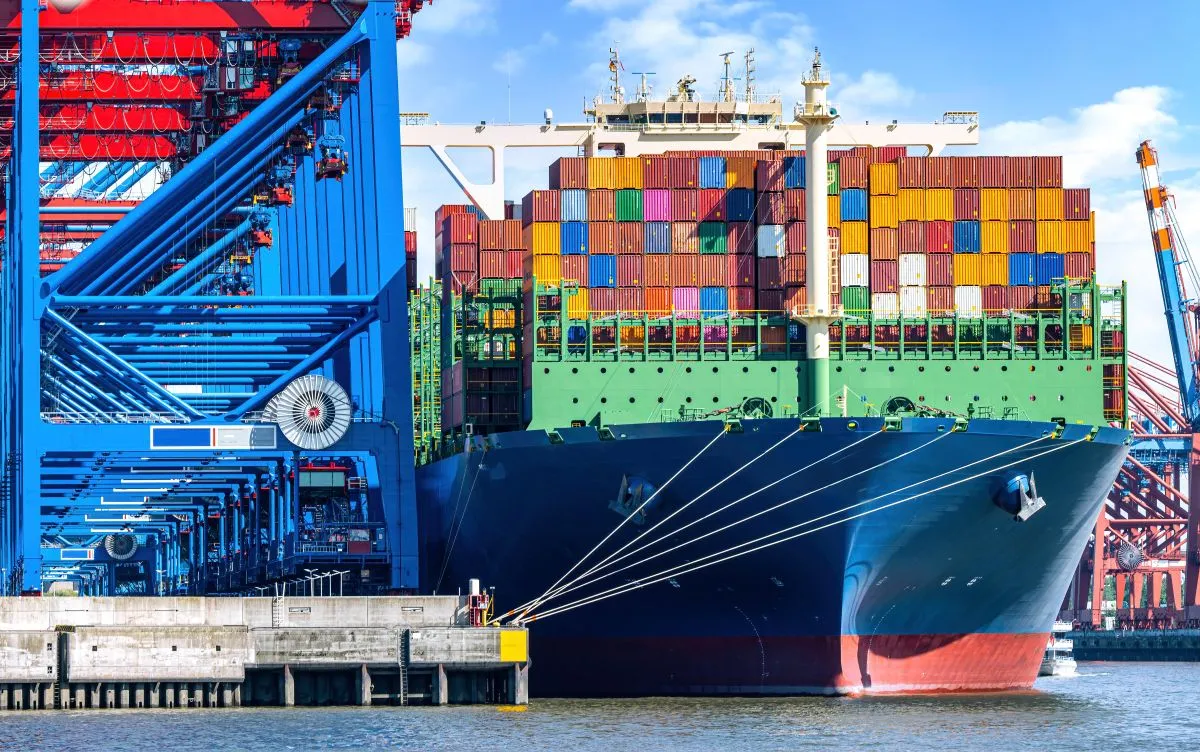Germany’s export model, built on motor vehicles, chemicals, and mechanical engineering products, is increasingly under pressure. Vehicle production volumes are already lower than in 2019, while the country’s carmakers face stiff competition from Chinese electric vehicles. As the report notes,
“European motor vehicle sales are under pressure from imports of Electric Vehicles (EVs) from China, whilst German vehicle manufacturers are ill-positioned to adapt.”
Chemical production — another pillar of Germany’s trade surplus — is also struggling. Although the region still posts a surplus, Europe is losing global market share due to high energy costs and new capacity coming online in China, the Middle East, and South East Asia.
The decline in these industries is expected to hit freight markets directly. Containerised exports of vehicles, chemicals, and machinery have traditionally underpinned flows through major EU ports, but the report warns of “strong downward pressure on export sea freight.”
Air freight shifts towards e-commerce
Air freight demand is being reshaped by consumer spending and e-commerce. Historically, the automotive sector was one of the largest buyers of long-term air cargo capacity. With vehicle production under strain, that demand has weakened. Instead, shipments from Chinese e-retailers have become dominant.
The report suggests that China-to-Europe e-commerce could account for 40–60% of total tonnage, though it cautions that the figure is unconfirmed and volatile. This concentration makes the market fragile. Retailers are already shifting sourcing closer to Europe, including Turkey and peripheral markets, which could dampen long-haul demand in the medium term.
The crisis in the Red Sea has further increased volatility, driving short-term spikes in air cargo as shippers move inventory quickly. Looking ahead, the report argues that air freight growth rates are likely to mirror consumer spending patterns more closely than before.
Tariffs reshape EU–US flows
Europe’s trade relationship with the US is also being redrawn. A new agreement sets tariffs at 15%, down from the initially threatened 30%, but still significant for European exporters. An earlier deal with the UK, negotiated on more favourable terms due to Britain’s trade deficit with the US, is expected to reduce EU–US volumes further by diverting some flows through the UK.
As a result, the report anticipates Europe’s trade position will become more complex, with imports sourced more widely and exports shifting towards high-value sectors such as pharmaceuticals, aerospace, and advanced engineering components. Services, particularly IT, are expected to play a larger role, while economic weight within the continent may shift away from Germany towards North Central Europe and the UK.
China’s volatility and India’s resilience reshape global freight
China remains the most influential player in global freight. Container throughput at ports such as Shanghai continues to expand, but widening imbalances between exports and imports raise doubts about sustainability. The report concludes that “China is using trade to sustain growth in its economy, with the effect that it is exporting deflation.”
Other regions are also reconfiguring their roles:
- Japan and South Korea face reduced competitiveness in vehicles and electronics, with production increasingly shifted to Southeast Asia.
- India is emerging as a resilient, import-driven market underpinned by domestic consumption and infrastructure investment.
- South East Asia is absorbing displaced production from China, with Vietnam and Cambodia becoming major consumer goods hubs.
- The US remains the global demand engine, with consumer spending shaping container flows and domestic express air freight networks.
- The Middle East is investing heavily in ports and airports to position itself as a global logistics hub, with Dubai already playing that role.
Europe’s freight flows shift from exports to imports
For Europe’s freight forwarders, the implications are profound. Structural decline in export-heavy industries such as vehicles and chemicals, coupled with tariff barriers and shifting demand towards e-commerce, will weigh on traditional sea and air freight flows. Import demand may hold up better, but overall growth prospects appear subdued.
The report underlines the fragility of the system:
“The world trade system is highly dysfunctional with large and persistent imbalances in merchandise trade.” For forwarders, adapting to these imbalances will mean managing more volatile demand patterns, adjusting to new sourcing geographies, and aligning more closely with high-value and service-based trade.









